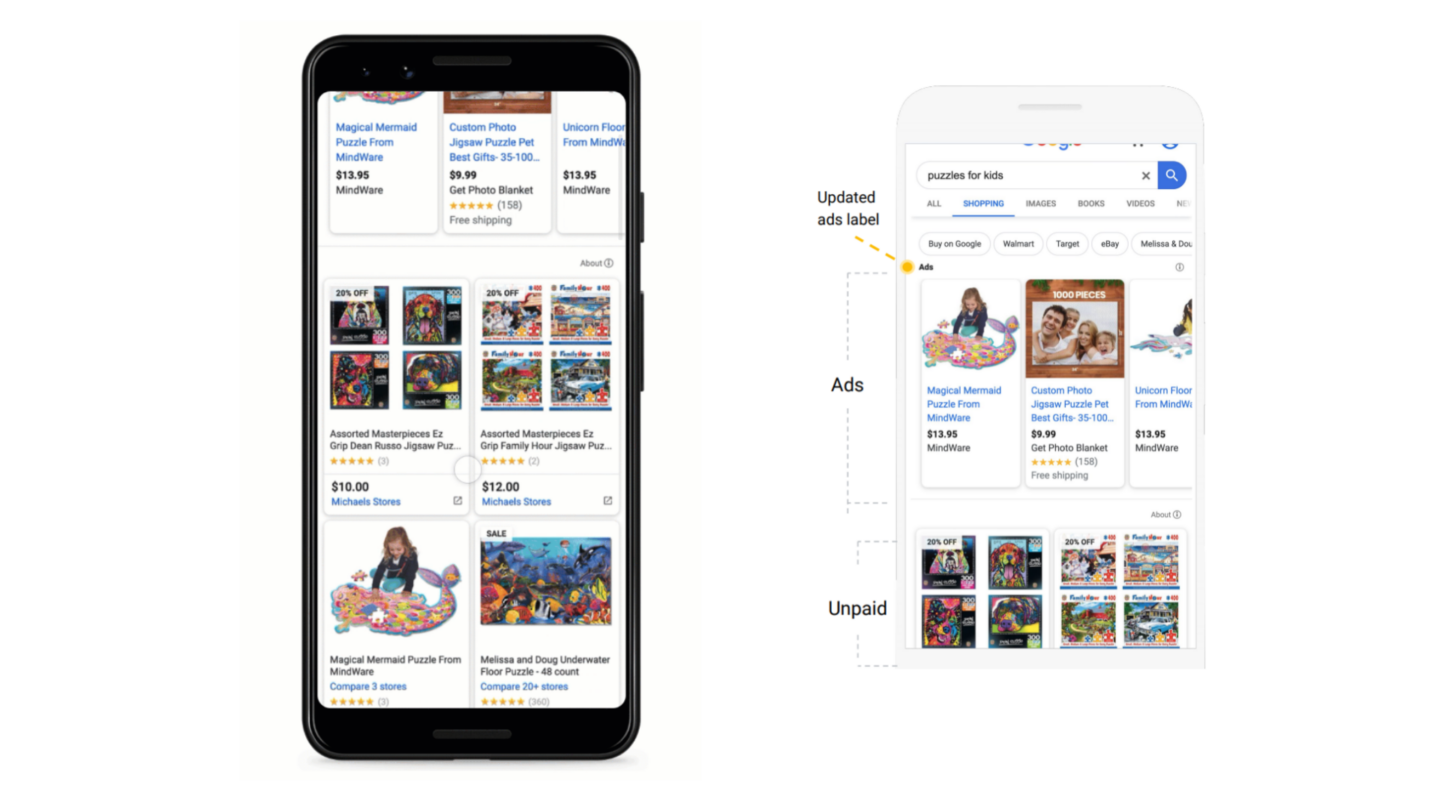Google Launches Unpaid Product Listings For Shopping


Google announced a major change today that it is opening up its Google Shopping property to include organic listings from merchants that opt-in (for free) by submitting an optimized product feed through the Google Merchant Center.
This is an extension of several updates that have trickled out over the last few years: it’s an update to the Surfaces on Google program, which already empowered merchants who don’t run ads to populate rich product content on Google organically. This program was most recently updated with a Popular Products carousel.
Most importantly, it’s a product of the Google Shopping revamp that Google slowly rolled out over the past year–establishing itself as both an ad publisher that sends highly qualified traffic to merchant websites as well as a marketplace platform that helps customers browse, research and buy without leaving Google.
Here’s everything to know about Google’s new Unpaid Product Listings, how they work, how to set up, and how they fit into Shopping strategy.
“We see this as a positive change for our clients and all advertisers that have invested in product data and feed management. While the volume from this program will be low, advertisers will be able to scale up the efficiency of their Shopping programs by supplementing paid Shopping ads with free product listings.”

— Evan Kirkpatrick, VP of Shopping & Feed Management at Tinuiti
These new free listings will not be added onto the search engine results page (at least for now).
The units will instead show on the Google Shopping property (https://shopping.google.com) or the Shopping tab that you can click on from a search results page.

The Shopping property/tab currently represents a much smaller portion of traffic versus the search engine results page.
Anecdotally, we estimate that it accounts for less than 5% of current paid shopping click traffic. Google has told us that Merchants can expect a 3-5% increase in click volume from this new format.
We do expect more traffic to land on this Shopping tab now as Google continues to invest in its platform by making it a better experience for customers. Adding more merchants will be a way to help small businesses surface their products during a tough time.
It will also help grow the breadth of products that Google is offering via its Shopping program.
From a merchant standpoint, it is crucial to invest in product data feed management services right now.
While these new listings will be free, Google will still surface listings more from merchants that submit clean, relevant, frequently-updated information that adheres to Google’s many data best practices and specifications.
There are a lot of optimizations to make in the product data that you might not think about. This isn’t the same as SEO, and Google won’t just create these listings from the data that it already crawls from your website’s meta tags.
Since there will be no way to bid on the incremental traffic you’d get from these free organic listings and an influx of new merchants in Google Shopping, it will be even more important to have a strategic approach (and an experienced partner) in the way you send Google your product titles, descriptions, categories, etc.
“With a portion of the Google Shopping pie shifting towards unpaid, organic results, the need for feed optimization is increasingly crucial.”

— Josh Brisco, VP of Growth Media at Tinuiti
“As bid is no longer a factor in the serving of these product listing ads, the primary point of consideration now becomes how relevant the data found in a product feed is to the actual search itself. There is now no reason for any online retailer to not be sending a fully optimized feed to the Merchant Center, regardless of whether or not they are investing in paid Google Shopping.”
For years, Google has been trying to improve the viability of the Shopping property and drive more traffic to the page/tab.
With their rebrand, they have made a lot of improvements, and it now looks very similar to Amazon. There are various filters for price tiers, manufacturer, product category, theme, clothing sizes, etc.
In the past year, Google has taken steps to enhance the property even more by adding a universal cart so customers can build shopping carts from different sellers and check out directly on Google instead of leaving to go to merchant websites.
There is now even an aspect of personalization on the Shopping property that feels very similar to Amazon’s “XYZ You Might Like” product recommendation feature.

For Google to continue to scale the Shopping program, the Shopping property needs to drive more than 3-5% of overall traffic. Google needs more visibility here to open people up to additional product categories and retailers (as opposed to people only seeing results for what they directly search for). By adding additional product listings to the property, it should lead to better consumer experience and potentially increase traffic over time.
According to the mockups, the new version of Google Shopping will have a slight bit of text indicating that a unit is an organic unit, but to most people, the ad units and the organic units will look extremely similar.

We are approaching a point where Google is surfacing dozens of ways for consumers to shop with Google Shopping.
You can find a product by clicking on:
With all of these formats to keep track of, growing your Google Shopping program will require much more expertise to make your products stand out and pull traffic away from your competitors. It’s important to have visibility into both the product feed and the campaigns in order to drive success.
From a reporting standpoint, merchants should be able to segment organic and paid listings in their reporting platforms using tools that are already available to them.
Google Merchant Center will have a report that shows paid vs. free clicks.

There is also a more advanced way to segment out the traffic by updating the URLs in your product data feed.
By adding a dynamic URL parameter for Google Ads traffic like https://www.example.com/exampleproduct.html?utm_content={campaignid}, you can have Google tag clicks from an ad. This dynamic parameter only changes into a number when someone clicks an ad. So you can find organic click traffic by filtering out the paid traffic. This will be a great workaround for merchants that depend on attribution platforms besides Google Analytics.
Right now, there are three primary models to get Google Shopping traffic (excluding local ads which mostly fall into bullet number three):
We still believe that pay-per-click Shopping listings offer the most benefit because you can put more money toward what works best for you and your business. You have valuable levers to push and pull that will help your business grow.
With paid advertising, you have a better chance of developing strategies that can be tested, tweaked, repeated and scaled. You can surface promotional pricing and messaging. You can billboard certain products for upper-funnel research queries. You can target limited specific audiences and demographics in order to gain a foothold against more-established and deep-pocketed competitors that are targeting everyone.
There’s no guarantee that you can get more traffic and sales from organic optimizations. If a drop in performance happens, you can’t guarantee that you will recover. Or if a huge boost in performance happens, you can’t guarantee that you can replicate that behavior. That said, the organic listings program is still a great opportunity for merchants!
All the hard work that goes into optimizing a product data feed for paid listings will now help you grow revenue from organic listings.
All in all, reporting will be important here to understand the impact this program is having. While we expect volume and impact to be small in the beginning, it has a chance to grow if Google continues to invest in the Shopping property/tab.
We expect Google to release additional reporting features in Merchant Center to help with this in the coming months.
